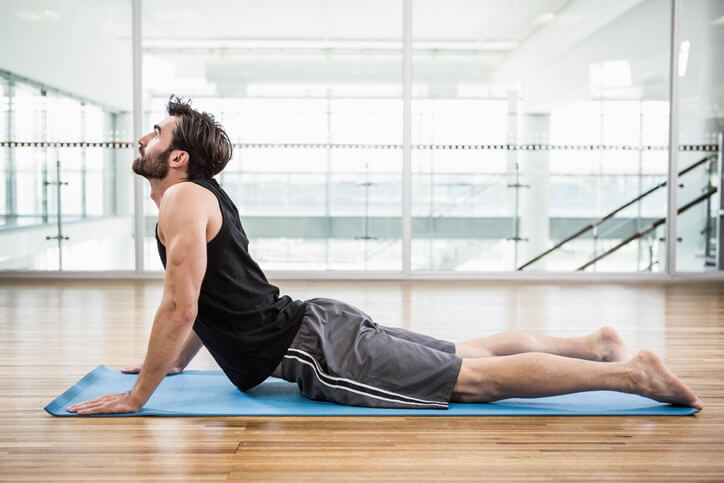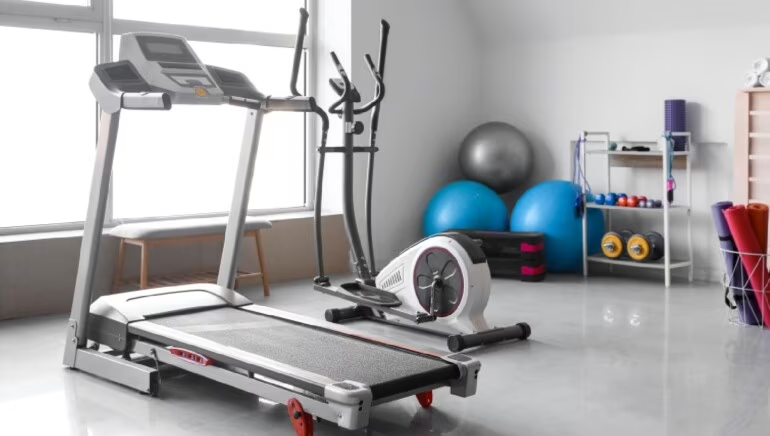Lower Back Stretches to Relieve Back Pain
Lower back pain is a common ailment that affects people of all ages. It can range from a mild discomfort to a debilitating condition, significantly impacting daily life. While there are various treatment options available, incorporating stretching into a pain management routine can offer significant relief and improve overall mobility.
Lower back pain can stem from various causes, including muscle strains, herniated discs, arthritis, and poor posture. Symptoms can range from a dull ache to sharp, shooting pain. It’s essential to consult a healthcare professional for a proper diagnosis and treatment plan.
Importance of Stretching for Pain Relief
Stretching is a valuable component of managing lower back pain. It helps to:
- Increase flexibility: Improves range of motion in the back and surrounding muscles.
- Reduce muscle tension: Releases tightness and stiffness in the lower back.
- Improve posture: Promotes proper alignment of the spine.
- Enhance blood flow: Delivers oxygen and nutrients to the muscles, aiding in recovery.
- Complement other treatments: Stretching can be combined with other therapies for optimal results.
By incorporating stretching into your daily routine, you can experience significant relief from lower back pain and improve your overall well-being.
Causes of Lower Back Pain
Lower back pain can originate from various sources. Understanding the common causes can help in managing and preventing the condition.
Common Reasons for Back Pain
- Muscle Strains: Overexertion or improper lifting can lead to muscle strains in the lower back.
- Disc Problems: Herniated or bulging discs can cause pain and discomfort.
- Arthritis: Degenerative conditions like osteoarthritis can affect the spine.
- Spinal Stenosis: Narrowing of the spinal canal can compress nerves.
- Referred Pain: Pain originating from other parts of the body, such as the hips or kidneys, can be felt in the lower back.
How Poor Posture Contributes to Back Pain
Maintaining poor posture puts unnecessary strain on the spine and surrounding muscles. Common postural issues include:
- Slouching: This can lead to rounded shoulders and increased pressure on the lower back.
- Prolonged Sitting: Spending long hours sitting without proper support can contribute to back pain.
- Improper Lifting: Lifting heavy objects incorrectly can strain the back muscles and discs.
Benefits of Lower Back Stretches
Incorporating lower back stretches into your daily routine offers numerous benefits for your overall well-being.
Improving Flexibility
Regular stretching helps increase the range of motion in your lower back, making it easier to perform daily activities and reducing the risk of injury.
Reducing Muscle Tension
Tight muscles in the lower back can contribute to pain and discomfort. Stretching helps to relax and lengthen these muscles, alleviating tension and promoting relaxation.
Enhancing Blood Flow
Stretching increases blood flow to the muscles in the lower back, providing essential nutrients and oxygen for tissue repair and healing.
Preventing Future Injuries
Regular stretching helps to strengthen the muscles and improve core stability, reducing the risk of future lower back injuries.
Expert-Recommended Lower Back Stretches
Incorporating specific stretches into your daily routine can significantly alleviate lower back pain and improve overall spinal health. Here are five expert-recommended stretches that target the lower back and surrounding muscles, providing relief and promoting flexibility.
Stretch 1: Cat-Cow Stretch
How to Perform the Cat-Cow Stretch
- Start on All Fours: Begin on your hands and knees with your wrists aligned under your shoulders and your knees directly below your hips. Keep your spine in a neutral position.
- Inhale into Cow Pose: As you inhale, drop your belly towards the mat, lift your head and tailbone towards the ceiling, and gently arch your back. This is the Cow Pose.
- Exhale into Cat Pose: As you exhale, draw your belly button towards your spine, round your back towards the ceiling, and tuck your chin to your chest. This is the Cat Pose.
- Flow Between Poses: Continue to flow between Cat and Cow poses with each breath, inhaling into Cow and exhaling into Cat. Perform this movement for 1-2 minutes, focusing on the smooth transition between poses.
Benefits of Cat-Cow Stretch for the Lower Back
The Cat-Cow stretch is a dynamic movement that promotes flexibility in the spine and gently stretches the muscles in the lower back, hips, and abdomen. It helps to improve posture, release tension in the lower back, and increase spinal mobility. This stretch is particularly beneficial for warming up the spine and preparing the lower back for other exercises or activities.
Stretch 2: Child’s Pose
How to Perform Child’s Pose
- Start on Your Knees: Begin by kneeling on the floor with your big toes touching and your knees spread apart about hip-width.
- Extend Your Arms Forward: Sit back on your heels and extend your arms forward, lowering your torso between your thighs. Rest your forehead on the mat.
- Relax and Breathe: Allow your chest to sink towards the floor, and let your shoulders relax. Hold this pose for 1-3 minutes, breathing deeply and feeling the stretch along your back and shoulders.
Benefits of Child’s Pose for Lower Back Pain
Child’s Pose is a gentle stretch that elongates the spine, relieves tension in the lower back, and promotes relaxation. It also stretches the hips, thighs, and ankles, making it a restorative pose that helps alleviate stress and fatigue. This pose is especially effective for soothing the lower back after a long day of sitting or standing.
Stretch 3: Knee-to-Chest Stretch
How to Perform Knee-to-Chest Stretch
- Lie on Your Back: Start by lying flat on your back with your legs extended and your arms at your sides.
- Bring One Knee to Your Chest: Slowly draw your right knee towards your chest, clasping your hands around your shin or the back of your thigh. Keep your left leg extended on the floor.
- Hold the Stretch: Hold the stretch for 20-30 seconds, feeling the gentle pull along your lower back and buttocks.
- Switch Sides: Release your right leg and repeat the stretch with your left leg. Perform 2-3 repetitions on each side.
Benefits of Knee-to-Chest Stretch for Lower Back Relief
The Knee-to-Chest stretch is effective in relieving tension in the lower back and hips. By gently pulling the knee towards the chest, this stretch elongates the lower back muscles, increases flexibility, and helps alleviate pain caused by muscle strain or tightness. It’s a simple yet powerful stretch that can be performed daily to maintain lower back health.
Stretch 4: Piriformis Stretch
How to Perform Piriformis Stretch
- Lie on Your Back: Begin by lying flat on your back with both knees bent and your feet flat on the floor.
- Cross One Leg Over the Other: Place your right ankle over your left knee, creating a figure-four shape.
- Draw Your Knee Towards Your Chest: Gently lift your left leg off the floor, pulling your left knee towards your chest. Use your hands to hold the back of your left thigh.
- Hold the Stretch: Hold this position for 20-30 seconds, feeling the stretch in your right buttock and lower back.
- Switch Sides: Release and repeat the stretch on the opposite side.
Benefits of Piriformis Stretch for Lower Back
The Piriformis stretch targets the piriformis muscle, which runs from the lower spine to the top of the femur and can contribute to lower back pain when tight or inflamed. By stretching this muscle, you can relieve lower back tension, reduce sciatica symptoms, and improve overall hip flexibility. This stretch is particularly beneficial for those who spend long hours sitting, as it helps release tightness in the hips and lower back.
Stretch 5: Seated Spinal Twist
How to Perform Seated Spinal Twist
- Sit on the Floor: Begin by sitting on the floor with your legs extended straight in front of you.
- Bend One Knee: Bend your right knee and place your right foot on the outside of your left thigh, keeping your left leg extended.
- Twist Your Torso: Place your left elbow on the outside of your right knee and gently twist your torso to the right, looking over your right shoulder.
- Hold the Stretch: Hold this position for 20-30 seconds, feeling the stretch along your spine and lower back.
- Switch Sides: Release the twist and repeat on the opposite side.
Benefits of Seated Spinal Twist for Lower Back Health
The Seated Spinal Twist is a beneficial stretch for improving spinal flexibility and relieving lower back tension. It stretches the muscles along the spine, helps realign the vertebrae, and enhances overall mobility. This stretch also promotes healthy digestion and can be particularly soothing for those with lower back stiffness or discomfort
Tips for Safe Stretching
1. Warm-Up Before Stretching
- Why It’s Important: Warming up increases blood flow to the muscles, making them more pliable and reducing the risk of injury during stretching. It prepares your body for the stretches by gradually increasing your heart rate and loosening stiff muscles.
- How to Warm Up: Engage in light aerobic activity for 5-10 minutes, such as walking, jogging, or cycling, before you begin stretching.
2. Avoid Overstretching
- Why It’s Important: Overstretching can cause muscle strain or injury, particularly if you push beyond your body’s natural range of motion. Stretching should be gentle and controlled, aiming for a mild tension in the muscle rather than discomfort or pain.
- How to Avoid It: Stretch to the point of feeling a gentle pull, but stop if you feel any sharp or intense pain. Hold the stretch for 15-30 seconds without bouncing or forcing the movement.
3. Listen to Your Body
- Why It’s Important: Your body provides signals that indicate when you’re pushing too hard. Ignoring these signs can lead to injuries or exacerbate existing pain, particularly in sensitive areas like the lower back.
- How to Do It: Pay attention to how your body feels during each stretch. If you experience pain, dizziness, or discomfort, ease out of the stretch and try a gentler approach. It’s important to be mindful of your body’s limits.
4. When to Consult a Professional
- Why It’s Important: If you have chronic back pain, an existing injury, or a medical condition, it’s crucial to seek guidance from a healthcare professional before starting a new stretching routine. They can provide personalized advice and ensure that the stretches are safe and effective for your specific situation.
- When to Seek Help: Consult a physical therapist, chiropractor, or physician if you experience persistent pain during stretching, if your pain worsens, or if you’re unsure about the correct way to perform a stretch. They can offer tailored recommendations and adjustments.
Conclusion
Summary of Key Points
Lower back pain is a common issue that can significantly impact daily life, but incorporating regular stretching into your routine can offer relief and improve flexibility, muscle tension, and overall spinal health. The expert-recommended stretches, such as the Cat-Cow Stretch, Child’s Pose, Knee-to-Chest Stretch, Piriformis Stretch, and Seated Spinal Twist, are effective in targeting the lower back muscles and alleviating pain. By performing these stretches correctly and consistently, you can reduce discomfort and prevent future injuries.
Encouragement to Incorporate Stretching into Daily Routine
Making stretching a daily habit can have long-lasting benefits for your lower back and overall well-being. Whether you’re dealing with occasional discomfort or chronic back pain, dedicating just a few minutes each day to these simple stretches can make a significant difference. Start slowly, listen to your body, and gradually build flexibility and strength over time. By committing to this routine, you’ll be taking proactive steps toward a healthier, pain-free life.




